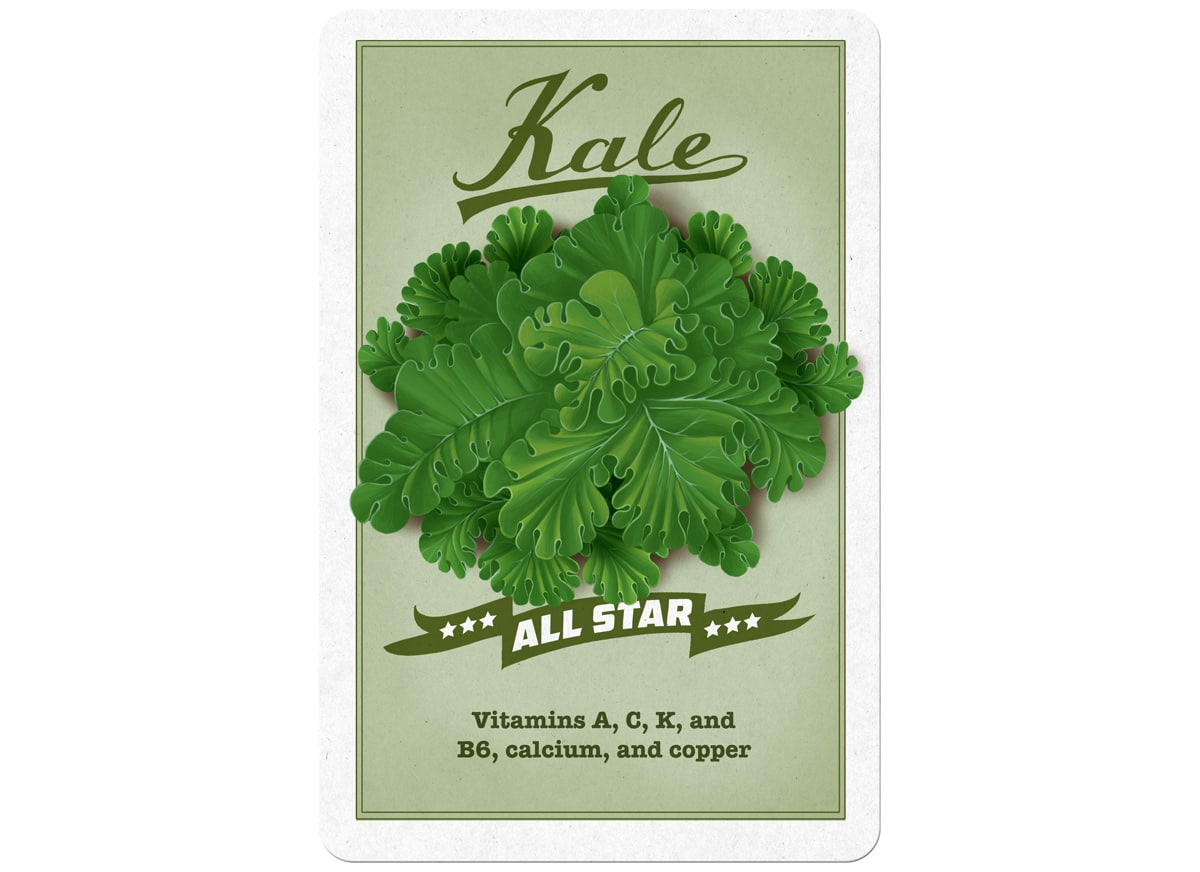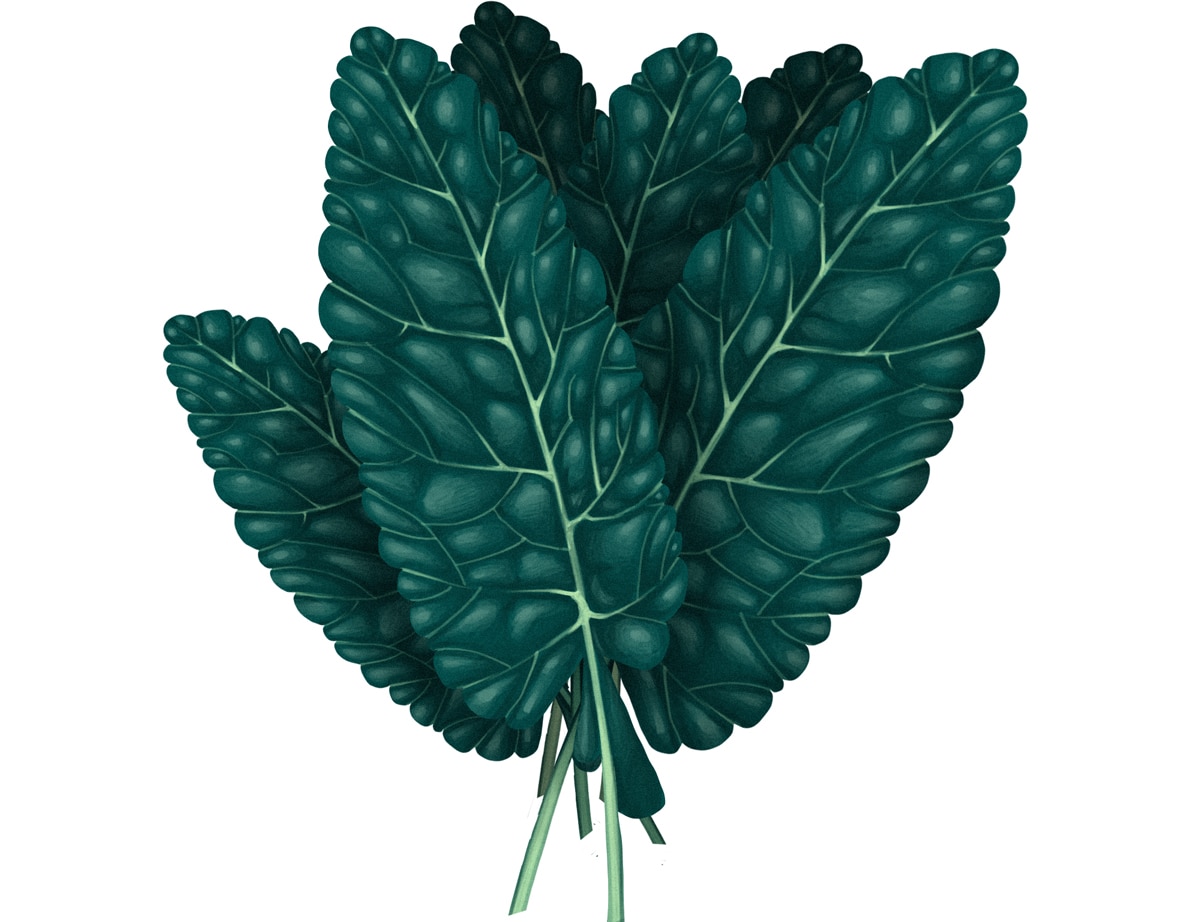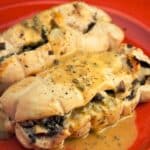
Kale is apparently old news at this point. Cauliflower is the new kale. Or maybe it’s collards. Or kelp. But the news that kale has been bumped off the throne of trendiness should actually be welcome to those of us who eat based on what’s nutritious, not what’s on the runway at the food version of Paris Fashion Week. Because guess what happens when a food loses some of its popularity? It gets cheaper. If you wanted kale-infused gluten-free flax-enhanced Paleo granola, you might be out of luck, but if you just want a big bunch of kale, now’s a great time to buy one.
Of all the brassica vegetables, kale is one of the most primitive and least modified by selective breeding. It’s not exactly what people would have been eating in the Paleolithic, but it definitely dates back at least to the invention of agriculture. It was originally native to the area around the Mediterranean Sea, and a common garden vegetable in ancient Greece. It’s been an important source of nutrition for poor farmers ever since, and as far as we can tell, it hasn’t significantly changed in at least the past couple thousand years.
It might have started in the Mediterranean, but kale is hardy enough to grow almost anywhere, and it’s a favorite winter vegetable in temperate climates because it’s tough enough to handle the cold. In some parts of the US and Europe, it’s one of the few things that does grow at the very end and the very beginning of the season. Historically, it was an important source of Vitamin C for farmers before we had grocery stores with year-round availability of vegetables.
Nutritional Bragging Rights, or Why This Thing was Called a “Superfood” in the First Place
There’s a reason why everyone started getting excited about kale in the first place.

*These nutrients are plant forms of the particular nutrient. The “Vitamin A” is actually several different carotenoids and other forms of pro-vitamin A that your body has to convert to Vitamin A before using, so it’s impossible to overdose on Vitamin A from kale. The Vitamin K is K1, not K2 in the grass-fed butter/bone health sense. The iron is non-heme iron, so it’s poorly absorbed.
Still, not too shabby. Cooked kale has more of some nutrients because it’s more dense when it’s cooked, so 1 cup of cooked kale might contain more than 1 cup of raw kale. But on the other hand, some nutrients also get destroyed by heat, so Vitamin C, for example, is lower in the cooked kale.
Like other vegetables in the brassica family, kale is also rich in antioxidants of various kinds, including some with interesting chemoprotective qualities. Claiming that any food “cures cancer” is pretty silly, but there is still a role for diet and exercise in reducing cancer risk, and kale is definitely one of the good guys here.
Just like any other food, kale isn't the perfect food for everyone. It's reasonably high in FODMAP carbohydrates, so it's not always great for people with IBS or other gastrointestinal issues. It is very rich in fiber, which doesn't play nicely with everyone's digestion. But that doesn't mean it's bad for everyone, and it certainly isn't a reason to avoid it if you do just fine with it.
Cooking with Kale
Kale has a few different varieties, but if you mix them up or just don’t want to deal with it, the important part is that they’re all delicious with bacon. All the varieties have big leaves (up to the length of your forearm) with a central stem.
- Curly kale: medium to bright green, with the edges curled in tightly.
- Lacinato kale (aka dino kale or Tuscan kale): darker green, blade-shaped leaves that aren’t curly. Lacinato kale is a traditional ingredient in Italian cooking.
- Red kale: dark to bright reddish-purple stems, with some of the red-purple color spreading up into the leaf, and moderately curly.
All of them have a slightly different taste, and the taste and texture also vary depending on the region and the age of the kale, so experiment a little to see what you like.
Each leaf of kale has a rib down the center. The rib is perfectly tasty, but it’s very fibrous and chewy (and not in a good way). Most people cut that out, but don’t throw it away: you can toss it into a pot of soup for extra flavor and nutrition.

As for what to do with the leaves once they're cut off...
Eating Kale in Salads
Raw kale can be very tasty, but not everyone likes the very fibrous texture of the leaves. The solution is to massage it. No, really.
The key to making great kale salads is to give your kale a massage with the dressing. Mix up whatever combination of oil and vinegar (and/or citrus, and/or spices…) you want to use, and rub it into the chopped kale with your hands. This breaks down the tough fibers in the leaves and makes them softer. And it also distributes the flavor of the dressing more evenly among the salad. If you’re using a dressing that isn’t a vinaigrette, you could just massage them with plain olive oil first and then add the dressing.
Try it:
- Raw kale salad
- Cranberry and Clementine Salad (half-and-half kale/spinach base, so it’s not quite so kale-centric)
- Chopped Salad with Shrimp and Curry Dressing (use purple kale for an intense visual effect)
Quick and Easy Dinner Sides
If raw kale still isn’t your thing, you can always fry it up in bacon fat with some garlic for a quick and very tasty side dish (it’s so easy it doesn’t even need a recipe; just don’t overthink it). Kale is also great for adding some texture and heartiness to winter soups - once you know how to cook it, it really can be a good comfort food.
Try it:
Summing it Up
Kale might be past its trendiest glory days, but that’s pretty great for the rest of us, because it means we can all enjoy it in peace without having to pay the trendy prices. It’s just as nutritious as it ever was, and once you know a few quick cooking tricks, like massaging it before eating it raw, it really does taste great.





Leave a Reply